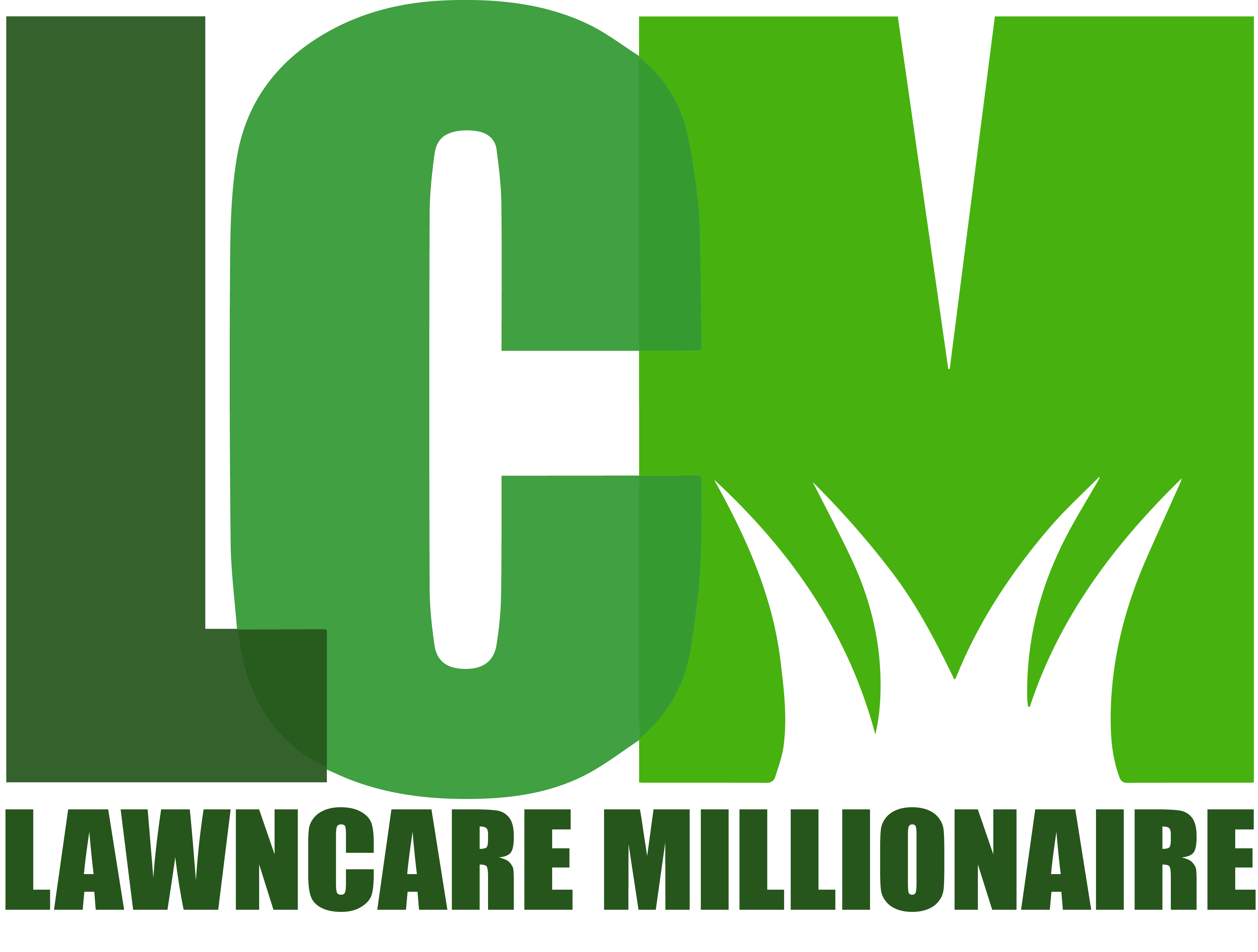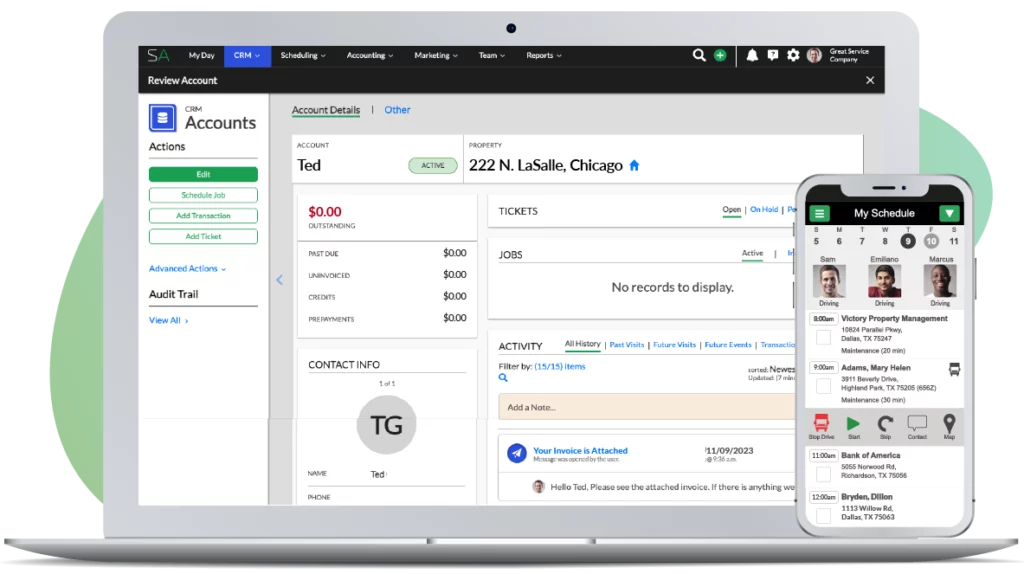Jonathan:
This is part two about how to put together your marketing plan. In the first video, I was talking about pulling together some data. Let’s talk about your marketing plan. Your marketing plan is going to start with building out a marketing calendar, which can be very simple. It’s basically just identifying when you are going to do certain types of marketing throughout the year. I’m going to explain that in a little bit more detail.
By using some of that data, such as where are your clients coming from, which zip codes, which sources, meaning what’s working best, which clients buy more from you when you do a door hanger campaign, and a … I use door hangers just to represent any type of marketing campaign. Do door hangers work better in a certain zip code, versus another zip code? Or, Facebook better in one versus another? You might double down. On Facebook, it’s a little less important to double down. That’s in digital marketing.
But, on the print marketing, EDDM, postcards, door hangers, lead letters, knocking on doors. Any of those types of things when you’re building out your marketing strategy, you absolutely want to look at data and you want to say, “Okay, which of those offline types of marketing,” meaning they’re not digital marketing, are working the best. Meaning, they’re bringing in the most clients, they’re bringing in the most revenue, and also before they even become a client, the most leads with the best conversion percentage. This is where we could talk for hours. I’ll try to stay on track here. Which ones are the best, okay? We’re looking at that. Which markets are the best, which lead sources are the best?
From that, you can decide, “Okay, I’ve only got $10,000 to spend …” Or, for a big company, “I’ve got 100 … I’m a big company, I’ve got 100 grand to spend,” or whatever that number is. Where do I want to spend it? Last year I spent money on offline marketing, print marketing, or door knocking in these markets. But, this one really outperformed all the others. I think there’s something to that, you know? You’re making a guess. I don’t think it was an anomaly, so let’s spend the majority of our marketing in that zip code, or in a couple zip codes, and let’s ignore these other zip codes.
This is exactly what I’ve done over the years. I’ve figured out where the best areas were. We even got down to the place of saying, “Where are the best neighborhoods? Let’s dial in those neighborhoods, and double down there, and let’s ignore other neighborhoods around those neighborhoods.” Because, at the end of the day, especially residential, the games about density. I’m considering that data, all right? I’m considering where should I spend my money?
I’m also thinking about things like, how much work can I handle? You might say to yourself, “Wow, I would love to sell X amount of work.” But, can you find enough team members, can you train them fast enough, can you find the trucks and equipment? If you get too many team members, will you now need an operations manager? Can you really get that done this spring? Those are things you need to ask yourself, and now you can also look at your data about when did clients come in last year, or when did leads come in, what was the conversion percentage? From that you … And, how much marketing did we do? From that you can extrapolate and say, “You know what? We could improve … If we’ve got the money, I could grow my marketing budget by 50%, or 100%. Even if it doubled my leads, I can still handle that amount of work at that time of year, because I can find enough people, and I’m competent in that.”
But, you want to be careful that you don’t overspend on marketing, where it drives so many leads, you don’t even have enough individuals in the office to answer the phone. Then, you’re just wasting all that money. The phone’s a great example, you really need to be able to answer that phone live. Unless you … So, you’re looking, you’re thinking about bottlenecks. Great, I had 100 leads last year, 50 converted to clients. If I had 200, could we really answer all the phone calls? Because, they don’t come in, in a smooth pattern. They don’t come in a few every hour, nicely placed across the 30 days of the month. They come in, in pockets. They come in from 10:00 AM till 2:00 PM. They come in at 5:30 in the evening, and after. They come in predominantly within these 10 days of the month. That’s the complexity. It’s not nicely spread out, where you can handle the volume. You have to handle the peaks. Will you be able to do if it you double your budget? Will you have the team?
If you say, “I can’t handle it, but I want it.” Great, then go build out the team so that you’re able to handle that work. This is also thinking through your marketing. You want to think about, again, what has worked best in the past. I kind of touched on that. Now that you kind of know what’s worked, where things have worked. You’re telling yourself an honest story of how much new work you can handle, and you’ve looked at your past data to say, “Based on what’s happened, here’s what will probably happen if I increase my budgets.” Now what you want to start doing, is you want to break this all down into a marketing calendar. A marketing calendar can be nothing more than an Excel Spreadsheet, it could be a sheet of paper, and you basically set it up like a calendar. You have January through December. In each given month, you are writing down the service that you want to sell.
For example, maybe you want to … We’ll use residential examples here. Let’s say you want to start selling lawn mowing in March, or maybe in your market it’s April, all right? Initially start out by just saying, “I want to start selling mowing March 1st, ’cause that’s when the season starts.” Then the best time to sell fertilization weed control, that’s February. That goes into your little calendar. The best time to sell ant treatments, is when there’s a lot of rain. That’s April, maybe May. Then, when’s the best time to sell irrigation? The best time to sell pest control? Think through your services. Mulch, flowers, all right? Now block that out on your calendar. Those are, the best times are those where the client, the phone starts ringing at your office. It’s really how you want to think about it.
Historically, when has the phone started ringing like crazy, and everybody’s wanting to buy this thing? When that happens, that needs to go into your calendar, all right? Now that you have that on your calendar, also think about not only are you thinking about selling new clients, you’re also thinking about growing the value of your clients, called expansion revenue. I have a client that comes in, and they just buy lawn mowing and some bush trimming. But, I want to expand them into a more valuable account by selling them fertilization, weed control, pest control. That’s called upselling, it creates expansion revenue, it drives the value, the annual value of the client. Then, the lifetime value, if you’ve ever heard some of these times, is the annual value of the client times the number of years they’ll stay with you. That’s their total dollar value to your organization over time.
All of that is grown by, well, taking a number of steps. But, one of them is selling more to your existing clients. On this calendar not only are you thinking about when are you going to get new clients, and what services you could sell in the marketplace at a specific time of the year to bring those new clients in. You’re also thinking about of the clients I already have, what are the things and what is the timing when I will sell them these new things? I’ve already got a lot of clients, and they might have ant issues inside, at their property at some given time of year. Okay, when are we going to do our email marketing, when might we send a postcard to their home, when might we do a voice bomb on their phone? Things of that sort. That’s all on your marketing calendar.
Now that you’ve got all of that, and by the way, you want to be kind of simple here. It’s really easy to get super excited about next year, and just fill up that calendar. We got to live in reality. You’re going to be crazy busy selling work potentially, producing work potentially, taking support phone calls from your clients, running the business, scheduling, invoicing, and everything else. Dealing with fires, and buying trucks and equipment. There’s a million things that are going to happen. What can you really do? Keep it pretty simple, all right? Don’t overdo it. That goes back to why you look at your services that, and based on how much money they might generated per man hour. You say, “Okay, frankly I’d love to do everything, but I can only really promote three services this year. These are the three that I’m going to promote. I can only promote one thing at a time to my clients.”
For example, maybe there’s 10 things you could sell in the month of June. You’re not going to get your clients attention to sell them 10 things. You really can only promote one thing. What is the one most important thing to promote in June? Now, if you get more sophisticated and you’re using something like Service Autopilot, or other technology solutions that can segment your list. So, you can go in and say, “Give me everybody that only buys this.” Then, you’ll sell them this, you’ll promote this other thing. Or, “Give me everybody that bought this thing last year.” Or, “Give me everybody that buys this, but doesn’t buy that.” There’s a million scenarios where you can segment. If you’re that sophisticated, then now you can actually run multiple promotions.
For example, you could run a promotion to all the biweekly law mowing clients, to upgrade to weekly, and only send it to that group. Well then you’re saying, “Now, also give me all my weekly clients that don’t buy fertilization, weed control, and I’m just going to market to that group. And, give me everybody that doesn’t fit one of those two categories that’s left, that doesn’t have aeration, and I’ll sell that.” If you segment it, then you can actually run three marketing campaigns all at the exact same moment, but each individual client’s only getting one marketing campaign, and you’re not overwhelming them. That’s again, getting a bit more sophisticated, but that’s what’s on the table. If you’re a big organization, then that’s how your marketing calendar needs to be built.
Now we’ve got our marketing calendar blocked out, we’re going to keep it somewhat simple. We know when we need to sell certain things to get new clients, and sell certain things to expand the value of our existing clients. Now we want to back up from that and we want to say, “Okay, if I want to start promoting mowing on March 1st, then when do I need to start getting ready?” All right? On March 1st we’ve got mowing. By the way, your calendar needs some flexibility because if you have cold weather on March 1st, then maybe this year … Or, next year, you won’t start really selling it till March 15th. Think about the earliest potential date, ’cause you don’t know what’s going to happen with the weather. Let’s go with March 1st.
Now, let’s rewind. When do we need to start getting ready to produce the door hangers, or the digital marketing, or the whatever, that’s going to go out to the client? When do we need to produce that? Then we’re going to back up on our calendar. Then, when do we need to have all of that to the door hanger company, or when do we need to have all of our teams aligned, or when do we need to have it to our consultants or contractors so that all those things can drop right at the right time, or the ads get turned on in the digital platforms all at the right time? We gotta back up and say, “When do we need to start getting that ready?”
Then from there, if we have to produce new creative, new design, and look, and feel, and ads, and whatever, collateral. Then, when do we need to get that to the contractors and consultants based on their schedule? You back all that out in your calendar. The calendar’s not just about when to do it, it’s when do we start working on this project, when’s it got to be done by, and you break it down.
Then, what you’ve got is you’ve got this operating calendar where all you have to do … I mean, it’s never really that simple. But, what you gotta do is you’re like, your calendar says, “Okay, it’s February 1. Start getting the door hanger campaign ready. It’s February 15th, get that campaign to your consultant, or your contractor, or whomever to get their feedback on the copy.” You’ve got this all laid out. Then, you know exactly what you need to do and when, and who’s going to do it.
Once you break down this calendar, you have all of that broken out. Now you can look and say, “Okay, do I really have the people that can do this?” If you don’t have the people to do it, that’s okay. Are there any contractors, or consultants, or individuals that you can have help you? You don’t have to have everybody on your team. You might have some people on your team that can do parts of it. But, other parts you can outsource. By getting this down on paper not only do you now have a plan that’s more likely to happen. You also can see the holes in your master plan where you’ve over estimated, or you’ve been dreaming too big, and you’re missing the people or the pieces of the puzzle to get it all done.
Then, once you see that, then you can go solve for that problem. You go find those people. Or you can say, “You know what? I’m just not living in reality.” Cross that off, that’s a next year project, or two years from now. We’re just not going to get to it. That’s what this plan does for you. I would encourage … I’ll leave you with this. Pick a few things, the few things you can really do to get new clients, and a few things you can really do to grow the value of your clients. Get it blocked out on a calendar, you get blocked out when that marketing needs to start, as well as when do you need to start prepping for it? There’s even more you can do, and you can do some Google searches around building out a marketing calendar.
But, I would encourage you to keep it simple. A few marketing efforts done very, very well over and over, tested and refined, will serve you very well for quite some time to go. Then, each year you could add a little bit more, you can get a little bit more sophisticated. That’s the gist of a marketing plan. We could talk again for hours or days on everything you could possibly know, or what to know about a marketing plan. But, that should be enough to get you kick started. At a minimum, it should give you some ideas so you can now start doing some Googling, and figure out the missing pieces. I hope you’ll put together your plan. Thanks a lot.
Podcast: Play in new window | Download
Subscribe: RSS


